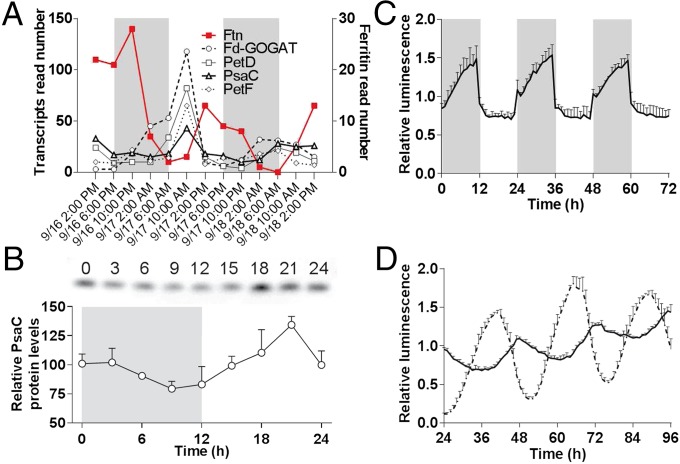Fig. 1.
Day/night and circadian regulation of ferritin and major iron-containing proteins in the field and in cultures. (A) Relative transcript abundance of ferritin (Ftn) and iron-containing proteins of PSI (PsaC), cytochrome b6/f (PetD), ferredoxin (PetF), and ferredoxin (Fd-GOGAT) during two complete day/night cycles [from an environmental dataset sampled on the Pacific Coast of the United States between September 16 and September 18, 2010 (25)]. The gray areas indicate the night period [photosynthetically active radiation (PAR) = 0]. (B) Day/night changes in the level of the PsaC protein. (Upper) Western blot analysis of PsaC under 12-h/12-h light/dark conditions. (Lower) Density quantitation of PsaC levels normalized to the mean signal. Data are shown as mean ± SD (n = 3). (C) Day/night changes in the level of ferritin inferred from the relative luminescence of the ferritin-luc (FTN-luc) translational reporter normalized to the mean signal. Data are shown as mean ± SD (n = 5). (D) Circadian regulation of ferritin expression. Translational reporters of FTN-luc (solid line) and circadian clock-associated 1 protein (CCA1-Luc, dashed line) were placed in constant light after entrainment under 12-h/12-h light/dark conditions. Normalized luminescence to the mean signal is shown (mean ± SD, n = 5).

